Port Terminal Wireless Video Monitoring Case
I. Project Background
In the operation of the port and dock, ships frequently conduct operations near rivers and the offshore areas. To ensure the safe and orderly operation of the waterway, it is necessary to efficiently transmit the real-time video information of the ships back to the monitoring center, so as to conduct precise monitoring of the operating ships remotely, thereby obtaining the first-hand information about the ships' operations and promoting the harmonious development of the entire society.
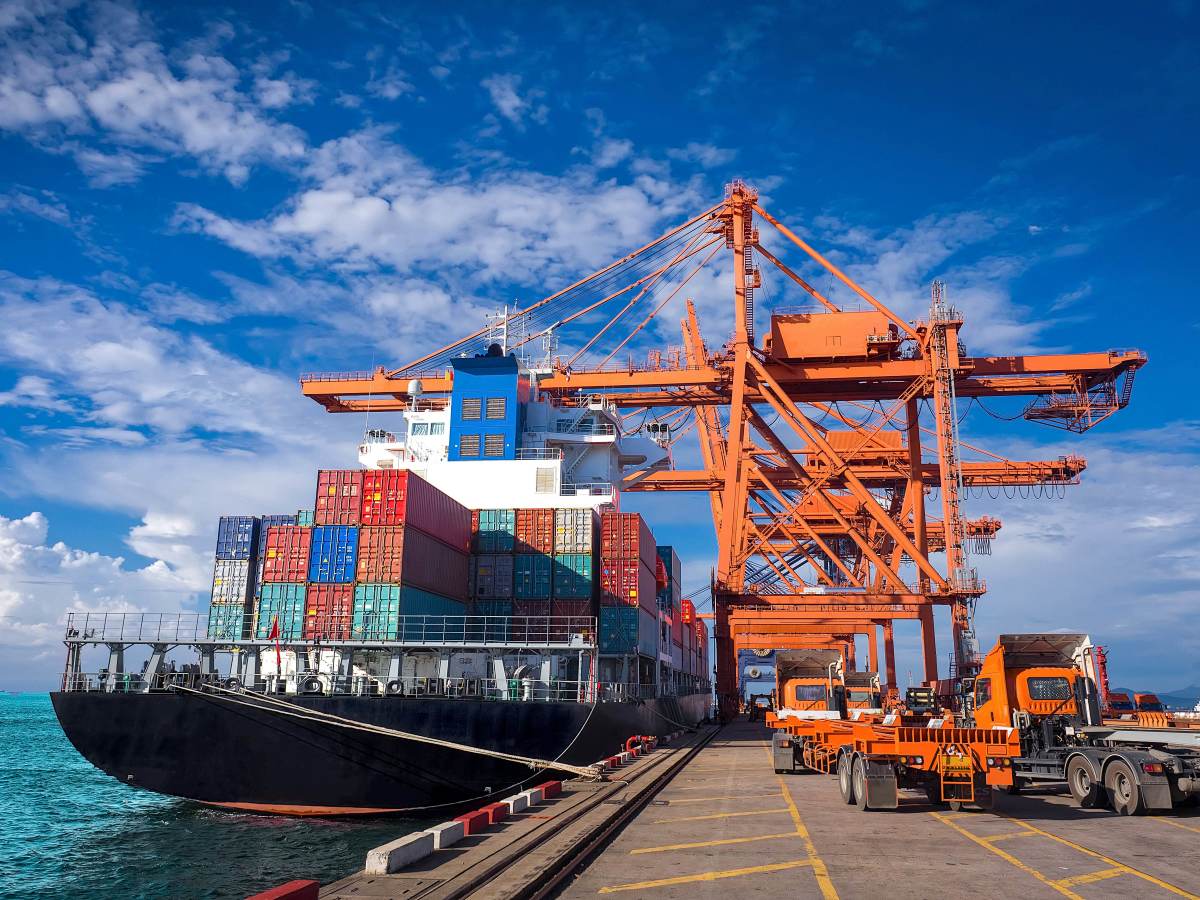
II. User Requirements
In the port and dock operation scenarios, in order to ensure the safe operation of ships in rivers and offshore areas, a wireless video monitoring system needs to be established. In remote areas without broadband access, economical wireless technologies such as WLAN are used to transmit videos, enabling real-time monitoring, data storage, and departmental collaboration.
Due to the fact that most of the monitoring points are located in remote mountainous areas and outdoors, and there is a lack of broadband transmission conditions, renting optical fibers would be extremely expensive. Therefore, the backbone transmission network adopts the economical, practical and stable WLAN wireless video monitoring technology. At the same time, it combines 3G data transmission technology and CDMA wireless monitoring technology to meet the requirements of conventional video monitoring. This system adopts the Wifi wireless data transmission technology based on the 2.4G frequency band. Through efficient image compression algorithms and Wifi wireless transmission methods, it realizes the information interaction between the on-site terminals and the monitoring center, achieving effective real-time image monitoring of remote operation sites.
III. Wireless Video Monitoring System Solution
(1) System Bandwidth Calculation
Take the case where there are 15 inland monitoring points for the project (each vessel monitoring point uses 4 monitoring cameras), and the video is transmitted in D1 high-definition video format with a bitrate of 2Mbps. Since each monitoring point has 4 cameras, the total bitrate for each monitoring point is 4×2Mbps = 8Mbps. The total bitrate for 15 monitoring points is 15×8Mbps = 120Mbps. In actual network planning, certain network redundancy needs to be considered to cope with network fluctuations and other situations, ensuring the stability of video transmission.
(2) Access Point Design
1. Location selection: The access point should be set up at a location along the waterway where there is no obstruction and direct visibility of the river. Additionally, priority should be given to choosing a monitoring location that can establish a high point, in order to expand the monitoring range, reduce signal obstruction and interference, and ensure the effective transmission and coverage of the signal.
2. Installation Tips: Based on the actual site conditions, select the appropriate antenna type and installation angle. For example, in an open area, a omnidirectional antenna can be used to achieve 360° coverage; in areas with specific coverage direction requirements, a directional antenna should be adopted to enhance the signal strength in specific directions. At the same time, ensure that the access point equipment is installed firmly and take protective measures such as waterproofing, dustproofing, and lightning protection.
(3) Selection of Wireless Equipment
1. Equipment Type: Since the surveillance images are subject to fixed transmission, it is recommended to use an external antenna-type remote wireless transceiver or a wireless DVS external directional antenna to enhance the wireless transmission capability between points and multiple points, and to prevent wireless image distortion during transmission.
2. Audio Function: Considering that there might be audio output requirements at the project monitoring points, both the wireless network camera and the wireless network video server equipment must support audio input and output functions. This enables the acquisition of on-site sound information while monitoring the video, providing more comprehensive data for the monitoring process.
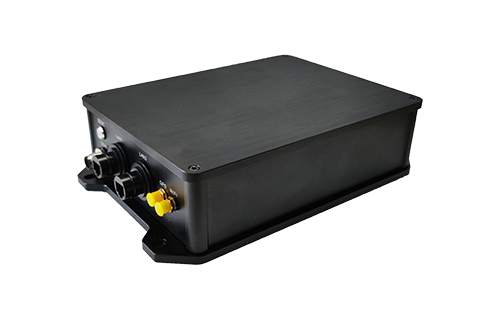
TQ-6504MS
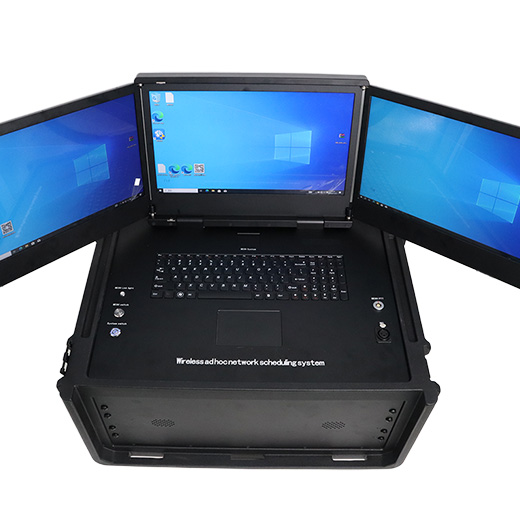
(4) Wireless Network Design
1. Coverage Design
● On both sides of the river course and along the coasts of nearby islands, depending on the specific mileage, 15 to 30 54Mbps wireless transceivers will be installed, and 120/60-degree sector antennas will be externally connected (the antenna selection will be determined based on the specific environment) to achieve wireless coverage for some areas of the two river channels from the north bank to the south bank and from the south bank to the north bank.
● Install 54M wireless transceiver devices on vessels such as ferries and river law enforcement boats, and establish wireless links with the coverage devices on both banks to achieve the transmission of wireless video surveillance image data.
2. Working Principle
● Data collection and transmission of onboard equipment: Law enforcement vessels use waterproof and shockproof integrated network cameras to collect analog video signals. These signals are converted into H.264 format digital videos by their own video encoding systems. The digital video data is connected via twisted-pair cables to a wireless remote bridge, and the wireless remote bridge is externally connected with omnidirectional antennas to transmit the video streaming data to the corresponding wireless access point.
● Data transmission of shore-based equipment: The wireless access devices along the river channel are connected to the wired network for landing, and the digital video collected by the onboard monitoring equipment is transmitted back to the monitoring and command center at the river center. The specific process is as follows: The wireless access devices first establish communication with the onboard wireless remote bridge to receive the transmitted digital video; then they connect to the wired network, and the monitoring and command center at the river center establishes communication with the wireless access devices along the river channel through the wired network; finally, the wireless access devices establish communication with the server of the monitoring and command center at the river center through the wired network, and transmit the digital video images back to the monitoring center.
3. Frequency Interference Handling
● Internal interference: By adopting a reasonable frequency planning scheme and the polarization mode of the transmitting antenna, internal system interference can be overcome. During network planning, for adjacent channel interference, through optimizing the frequency planning scheme and adjusting the antenna polarization mode, the most severe adjacent channel interference frequencies between sectors can be reduced. For co-channel interference between adjacent sectors, a back-to-back frequency double-reuse method is adopted to effectively control the front-back ratio and polarization mode of the antenna, eliminating co-channel interference. At the same time, while meeting the system transmission indicators, the base station transmission power is reduced as much as possible to minimize interference between different cells.
● External interference: When selecting the site, fully consider factors such as terrain, antenna orientation, and interference from other links, and avoid external interference sources such as radars, scattered communication systems, and satellite communications to ensure the stable operation of the wireless network.
(5) Wireless Network Design
1.River channel wireless remote monitoring point: It is mainly composed of a wireless transmission system and a network camera. The waterproof and shockproof integrated network camera on the law enforcement vessel collects analog video signals. The wireless transmission system includes a wireless remote bridge and an external omnidirectional antenna, which are connected through a radio frequency feeder. The wireless remote bridge is directly connected to the wireless network camera via the wireless network system, and the digital video is transmitted back to the wireless access point along the river channel through the wireless remote bridge.
2. Selection of onboard cameras: As the equipment is exposed to humid and cold outdoor conditions for an extended period, it is recommended to choose waterproof and fog-proof integrated wireless network cameras / wireless network video server devices to ensure the normal operation of the equipment and the quality of image acquisition in harsh environments.
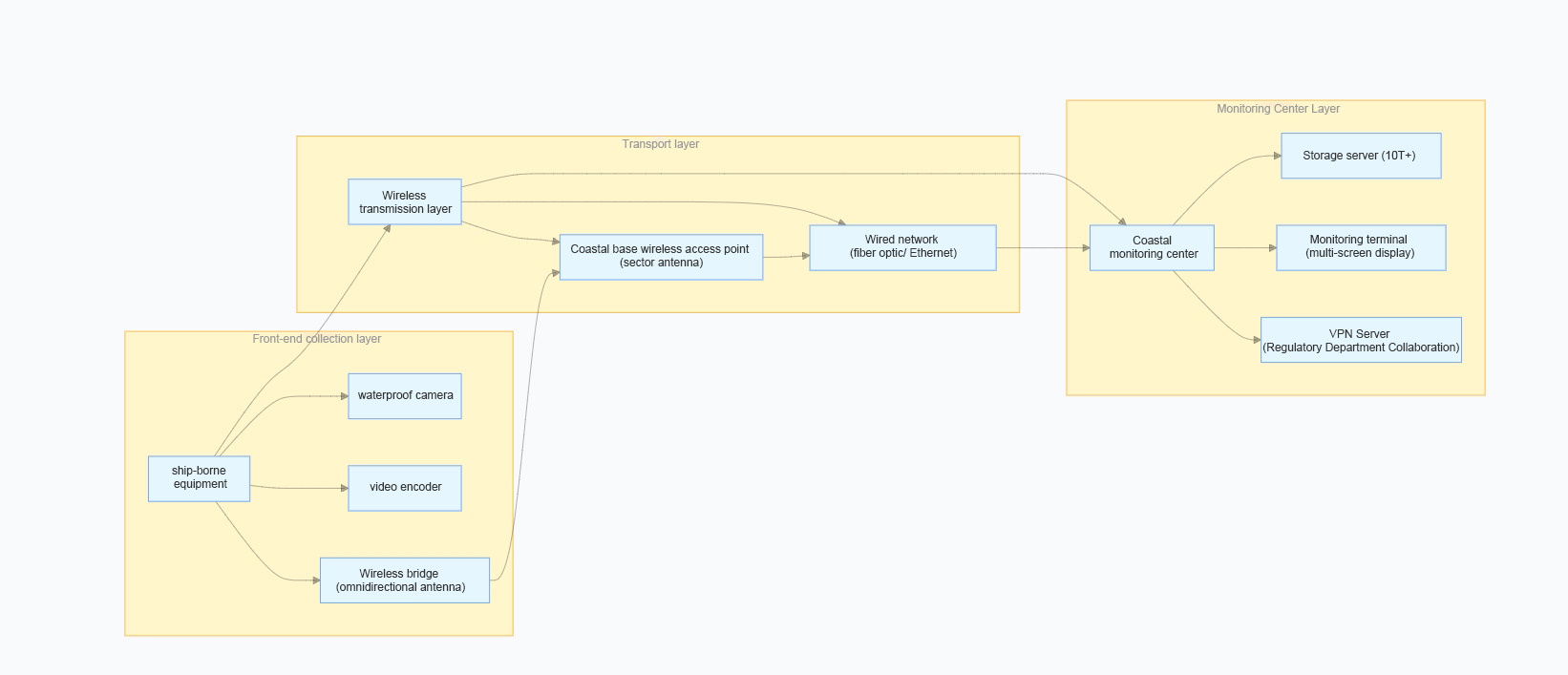
IV. System Function Implementation
(1) Video Monitoring Function
1.Real-time Monitoring: It supports 7/24-hour real-time high-definition video surveillance. Multiple video streams can be played simultaneously. The video display can be set in various layouts such as 1, 4, 9, or 16. It also supports custom video carousel, which is convenient for the monitoring personnel to comprehensively and promptly grasp the operation status of the vessel.
2. Multi-terminal Access: The system supports both C/S structure client monitoring and B/S structure IE browser monitoring. It also supports mobile monitoring via mobile phones at any time and anywhere. The playback end can be played on various platforms and terminals such as PC (Windows, Mac, Linux), mobile phone (Android, iOS), and WeChat, without any plugins for the web version, which greatly enhances the convenience and flexibility of monitoring.
3. Image Quality Assurance: The network cameras and network video servers used in the system adopt the H.264 video encoding standard, with an image resolution of D1 (720*576), ensuring clear image quality and enabling accurate presentation of vessel operations and waterway conditions. The onboard network video server is equipped with audio and video input/output terminals based on the G.722 audio encoding standard, guaranteeing clear audio collection and transmission.
(2) Data Storage and Playback Function
1. Deployment of storage servers: Deploy storage servers in the monitoring center, configure 10T of storage space, which can meet the requirement of backing up historical video images from wireless monitoring points for ≥ 15 days. This facilitates the subsequent retrieval, playback, and analysis of historical videos, providing data support for accident investigations, operation evaluations, etc.
2. Video Playback Function: This system supports video playback. Users can perform operations such as fast-forward playback, screenshot capture, real-time recording, full-screen display, and electronic zoom of the video. Additionally, it can capture all the alarm status and information recorded by the devices, and extract video clips based on the device alarm information to obtain screenshots of the video at the moment of the alarm, facilitating quick understanding of the situation at the time of the incident.
(III) Regulatory Department Collaboration Function
The system sets up a VPN server, opens video monitoring ports and accounts for the regulatory authorities, enabling the monitoring and linkage center of the regulatory authorities to obtain real-time information on the front-end video situation, and to perform operations such as video retrieval, video control, system video recording search, playback, download, etc., achieving efficient linkage between port and wharf management and the regulatory authorities, and enhancing the overall regulatory efficiency.
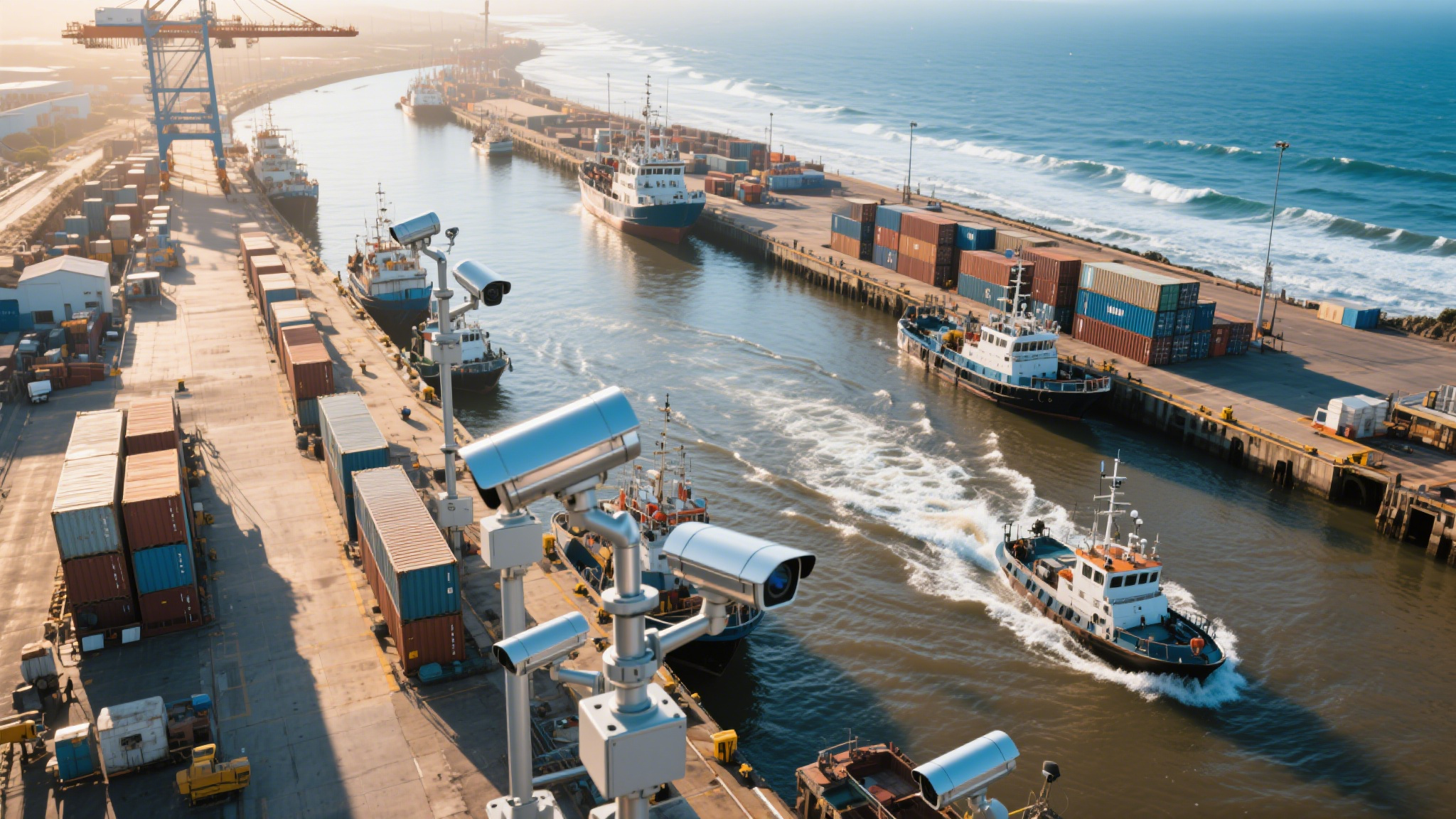
V. System Construction and Maintenance
(1) System Construction
1. Equipment Procurement and Installation: According to the design plan, purchase the required wireless transceivers, network cameras, wireless remote bridges, antennas, storage servers, VPN servers, etc. During the installation process, strictly follow the equipment installation manual and relevant specifications to operate, ensuring that the equipment is installed firmly, the wiring is correct, and protective measures for the equipment are taken.
2. Network debugging and optimization: After the equipment installation is completed, carry out the wireless network debugging work. Configure the parameters of the wireless transceiver, adjust the angle and position of the antenna to ensure that the signal strength and coverage meet the requirements. At the same time, test and optimize the network bandwidth to ensure the smooth transmission of video data. Conduct a joint debugging of the entire monitoring system to ensure normal communication between all devices, clear video image display, and normal operation of all functions.
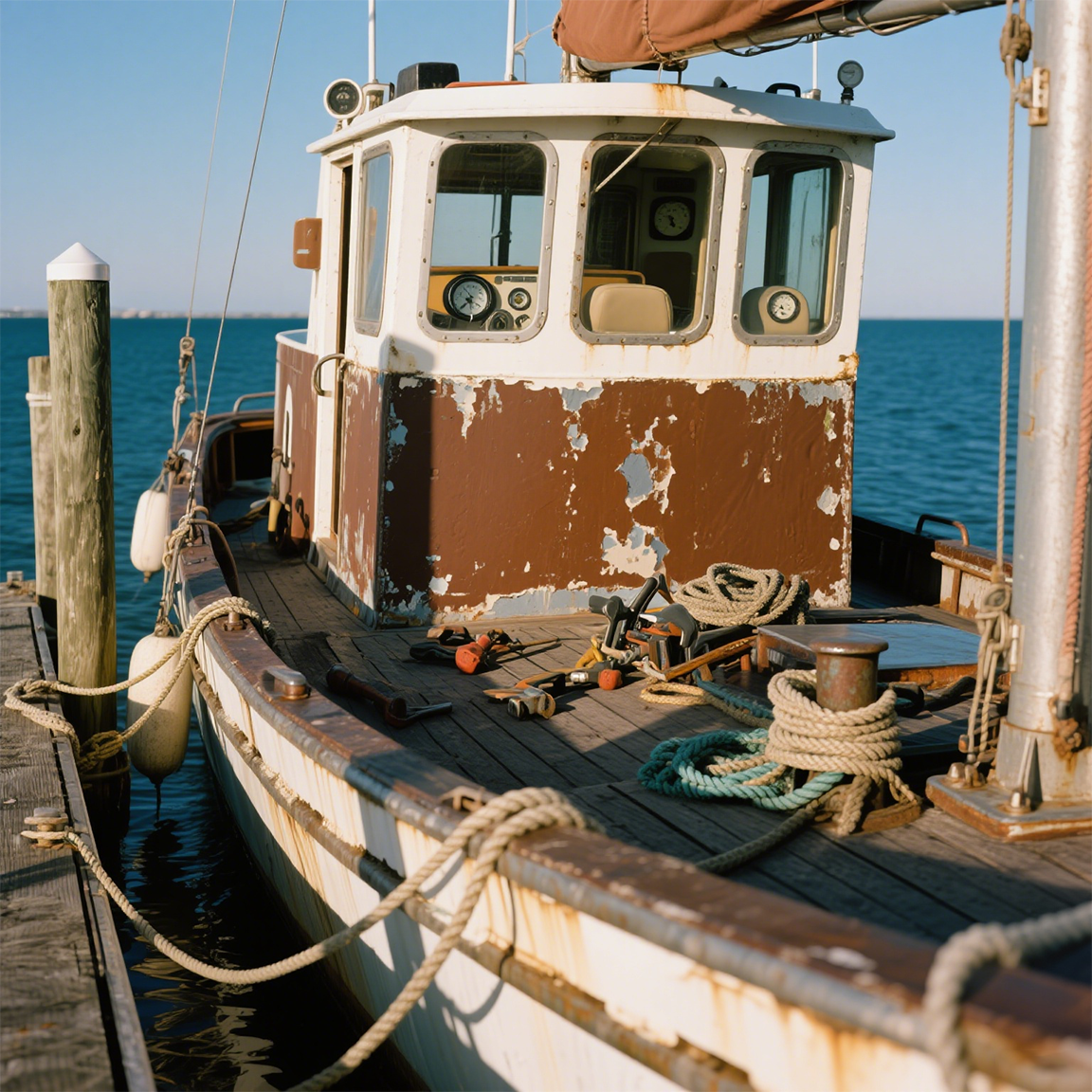
(2) System Maintenance
1. Daily inspection: Establish a daily inspection system to regularly check monitoring equipment and network devices, including their operating status, image quality, network connections, etc. Promptly identify and resolve equipment failures, signal interference and other issues to ensure the stable operation of the system.
2. Equipment Maintenance and Upgrades: Based on the lifespan and operating conditions of the equipment, regular maintenance and servicing of the equipment should be carried out, such as cleaning the equipment and checking the hardware connections. For aging or damaged equipment, timely replacement should be carried out to ensure the performance and functionality of the system.
3. Software Upgrade: Keep track of the updates of the monitoring system software and promptly upgrade the system software to achieve better performance, more functions, and higher security. During the upgrade process, ensure data backup to prevent data loss, and conduct comprehensive testing on the upgraded system to guarantee its normal operation.
VI. Summary
Through the implementation of this wireless video surveillance solution, it is possible to achieve real-time and comprehensive monitoring of ships in the rivers near the port and the offshore areas, thereby enhancing the safety of the waterways and improving management efficiency. The system possesses characteristics such as reliability, security, openness, and economic rationality, which can meet the long-term stable operation requirements of the port and provide strong support for regulatory authorities. During the construction and operation phases, operations are carried out strictly in accordance with relevant norms and requirements to ensure the stable operation and function realization of the system, and to safeguard the safe operation of the port and its facilities.








